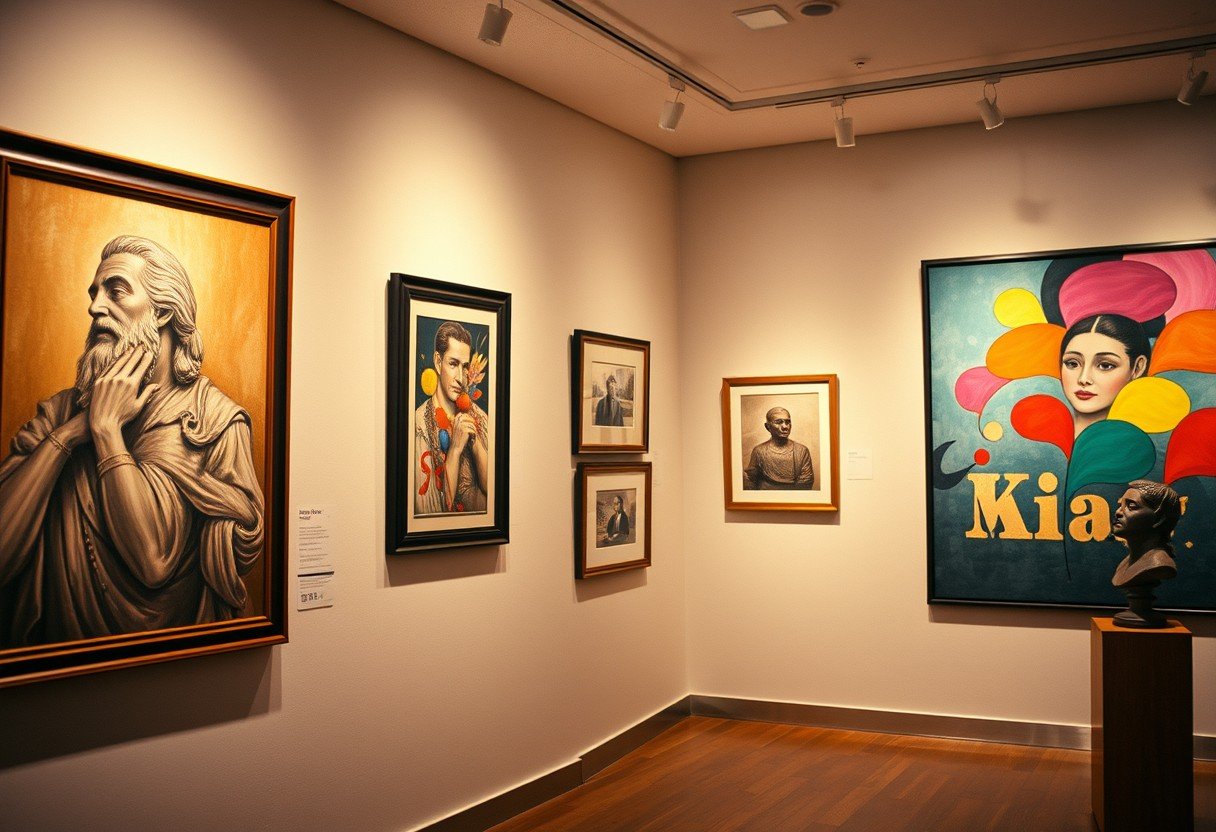With so many types of art available, it can be tricky to know the difference between a print and an original painting or sculpture. Understanding these distinctions helps you appreciate the skill behind each piece. The main differences come down to how they are made and the fact that prints can be reproduced, which makes them unique in the art world and more accessible for everyone to enjoy.
What Exactly is a Print in Art?
A print is an artwork created by transferring ink from a prepared surface, called a matrix, onto another surface, usually paper. Think of it like a highly artistic stamp. Unlike a one-off painting, this process allows an artist to create multiple copies of the same image.
This reproducibility is a core characteristic of printmaking. The techniques used are specialized and can create unique textures and visual effects that are hard to achieve in other mediums. This makes printmaking a distinct and respected art form in its own right.
There are several traditional and modern methods for creating prints, each with a unique look.
- Etching: This method uses acid to carve an image into a metal plate.
- Lithography: The artist draws onto a stone or metal plate with an oily substance.
- Screen Printing: Ink is forced through a mesh screen onto the paper or fabric below.
- Woodcut: An image is carved into a block of wood, which is then inked and pressed.
The Core Difference: Reproducibility vs. Uniqueness
The most significant distinction between prints and most other art forms is their ability to be reproduced. A painting or a sculpture is typically a singular, one-of-a-kind object. The artist creates it once, and that single piece is the entire work.
Prints, on the other hand, are designed from the start to exist in multiples. The artist creates the matrix—the plate, stone, or screen—and from that, they can produce many impressions. This allows the art to reach a much wider audience than a single painting ever could.
To manage this, artists often create “editions.” An edition is a set number of prints made from the same matrix. Each print in a limited edition is often signed and numbered by the artist (e.g., 5/100) to certify its authenticity and to ensure that no more copies will be made. This process of editioning helps maintain the artwork’s value and exclusivity.
A Look at Different Creation Techniques
The process of making art also sets prints apart. While a painter might apply paint directly to a canvas, a printmaker’s process is more indirect and often involves multiple technical steps. This requires a different set of skills, focusing on precision and planning.
Each printmaking technique has its own intricate process. For example, creating a multi-color lithograph requires a separate stone for each color, all of which must be aligned perfectly. This craftsmanship is a key part of the final artwork’s appeal.
Producing prints can also be a collaborative effort between the artist and a master printer, who has specialized knowledge of the equipment and techniques. This is quite different from the solitary work of most painters or sculptors.
| Art Form | Creation Process |
|---|---|
| Prints | Indirect process involving a matrix (plate, screen) to transfer an image. |
| Oil Paintings | Direct application of paint onto a surface, often involving layering. |
| Sculpture | Direct shaping or carving of materials like clay, stone, or metal. |
How do Value and Accessibility Compare?
Because original artworks are unique, they often command very high prices in the art market. Their value is tied directly to their singularity. This can make owning original art from a famous artist a goal that is out of reach for many people.
Prints, due to their reproducible nature, are generally much more affordable. This accessibility is one of their greatest strengths, as it allows more people to start collecting art and enjoy high-quality work in their homes. Prints effectively democratize art ownership.
However, this doesn’t mean prints can’t be valuable. The value of a print is influenced by several factors, including the artist’s fame, the rarity of the print (the edition size), its condition, and whether it is signed. A limited edition print from a renowned artist can be a very valuable investment that appreciates over time.
Aesthetic Qualities that Set Prints Apart
Prints often have a unique visual character that distinguishes them from other mediums. The various techniques can produce effects that are difficult to replicate. For instance, the sharp, precise lines of an engraving or the rich, velvety blacks of a mezzotint have a distinct quality.
The final look of a print is heavily influenced by the process. Artists have immense control over the final appearance, allowing for incredible detail and consistency across an edition. The textures created by the ink pressing into the paper also give prints a tactile quality that digital art lacks.
Compared to the often spontaneous and textural brushstrokes of a painting, prints can have a crispness and graphic clarity that gives them a powerful visual impact. The colors can be incredibly vibrant and flat, a quality famously used by Pop Artists like Andy Warhol in his screen prints.
The Cultural Impact of Printmaking
Historically, prints have played a crucial role in spreading information and ideas. Before photography and digital media, woodcuts and engravings were used to illustrate books, create political cartoons, and share images of faraway places. They made visual information accessible to the masses for the first time.
This ability to reproduce and distribute images has had a massive influence on art and culture. Movements like the German Expressionists and Japanese Ukiyo-e relied heavily on printmaking to develop their unique styles and communicate with a broad public.
Even today, contemporary artists continue to use printmaking to explore themes of mass media, consumer culture, and originality. They often mix traditional techniques with new technologies, proving that this historic art form remains a vital and evolving part of our cultural landscape.
Frequently Asked Questions
What are the two main differences between prints and original art?
The two main differences are reproducibility and technique. Original artworks like paintings are one-of-a-kind, while prints are made to be reproduced in multiple copies. The creation process for prints also involves specialized, indirect techniques like etching or screen printing.
Are prints less valuable than paintings?
Generally, prints are more affordable than unique paintings because they exist in multiples. However, a print’s value can be very high depending on the artist’s reputation, the size of the edition, its rarity, and its condition. Some prints are worth millions of dollars.
What does a ‘limited edition’ print mean?
A limited edition means that only a specific number of prints will be created from a single matrix. Once that number is reached, the matrix is often destroyed to ensure no more can be made. Each print is usually signed and numbered by the artist to certify its authenticity.
Can a print be considered an original work of art?
Yes, absolutely. A fine art print is not a simple copy like a poster. It is an original artwork conceived by the artist to be realized as a print. The artist is directly involved in the creation process, and the final piece is an authentic expression of their vision.









Leave a Comment